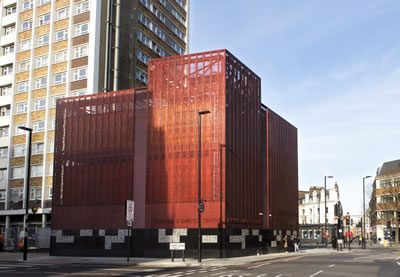Heat networks have been used in many parts of the World {including the UK - The Pimlico District Heating Undertaking opened in the 1950's as the UK's first true district heat network. This pioneering system connected 1,600 council homes to the waste heat generated by [the then] Battersea Power Station. The network survives under Westminster City Council today, serving 3,256 homes, 50 business premises and three schools.} to deliver "WASTE HEAT" {typically from the generation of electricty} to homes, businesses and public buildings/swimming pools etc. We see them as Combined Heat and Power systems {CHP} and in the UK at the moment there is 862MWe being generated with the correspondent Heat Network {theoretically at 1600MW}
Coming to a city near you - BUT NOT SOON ENOUGH it would appear
“Although heat networks currently meet approximately 2% of the overall UK demand for heating, the independent Committee on Climate Change (CCC) has estimated that, with continued support, they could provide 18% by 2050.” The Climate Change Committee (CCC)
 Meanwhile in North London, the Bunhill CHP installation has now incorporated waste heat expelled from London's Tube Train network - Bunhill 2.
Meanwhile in North London, the Bunhill CHP installation has now incorporated waste heat expelled from London's Tube Train network - Bunhill 2.
In 5th generation networks, decentralised heat pumps draw heat from an ambient loop, meaning that excess heat can be removed and redirected to provide heat elsewhere. In this way, the system can provide both heating and cooling.
Another development in heating technology being tested is the ‘Internet of heat’. This is the idea that users could both buy and sell heat and energy, allowing consumers to become producers too. This could one day lead to local energy and heat markets, with distributed, decentralised micro-generation that would lower energy bills, increase efficiency.
Such schemes are key to overcoming the risks associated with establishing new heat networks, which currently acts as a barrier to realising their potential to deliver heat to homes. Retrofitting properties currently supplied by gas, in particular, is expensive. However in a 'new build' scenario, a Heat Network should be standard to maximise energy efficiency and thus minimise costs to the consumer.
- Details
- Written by: Dept of Energy - UK and J C Burke
- Hits: 3435
 Improving and decarbonising1 networks
Improving and decarbonising1 networks
{cannot accept the myth of CO2 causing climate "emergency" or any other effects - therefore "decarbonising" is a misnomer}
Through the Green Heat Network Fund, the UK Government, has announced 28 funding awards totalling over £348m.
Projects supported by the Fund include a major new network in North-West London which will take waste heat from data centres and supply it to 10,000 new homes and 250,000m2 of commercial space.
In November the remaining Heat Networks Investment Project awards were announced.
Totalling £9.8m;
- London Borough of Islington (£678k) for an extension to the council's Bunhill network,
- Gateshead Council (£2.9m) for further connections to their Gateshead District Energy Scheme and
- E.ON (£6.3m) for their innovative Silvertown network in London's Docklands.
Through the Heat Network Efficiency Scheme (HNES) the government awarded over £34m to 230 projects over six funding rounds.
They have now launched the HNTAS pilot programme to test the scheme rules on live projects, ensuring HNTAS works in practice and aligns with industry needs, as well as the heat training grant, which provides those working in heat networks with up to £500 towards the cost of heat network training.
- Details
- Written by: J C Burke
- Hits: 7186
 Bio-Methane is simply methane generated from organic wastes {in an oxygen starved environment}. Methane capture from coal mines, and methane from other sources {such as tapping into waste-dumps} is a welcome strategy to utilise the enormous amount of waste, we produce. Estimated at 105bn tonnes globally by the World Bio-Gas Association {see article re -methane here on new tab - close to return here}.
Bio-Methane is simply methane generated from organic wastes {in an oxygen starved environment}. Methane capture from coal mines, and methane from other sources {such as tapping into waste-dumps} is a welcome strategy to utilise the enormous amount of waste, we produce. Estimated at 105bn tonnes globally by the World Bio-Gas Association {see article re -methane here on new tab - close to return here}.
However, it is perfectly OK to use methane from oil/gas exploration too - and with the UK's highly extensive gas grid, its all carried together to provide primary energy. Energy that is easily stored. Unlike that secondary energy source - electricity - which we will discuss further later.
But CHP? Combined Heat AND Power {and sometimes cooling}
We have tried to introduce CHP previously, as an important and strategic alternative to Centralised Electricity Generation. There are major disadvantages with centralised generation;
- Inefficiency discussed previously here {click} and again here {click} and cooling towers explained here {click}
- Instability
- Storage Problems
- Supply to Match Demand Problems Nationally
